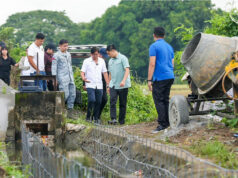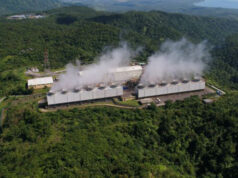By Mark T. Amoguis, Researcher

CONSTRUCTION starts, based on approved building permits, grew 11.7% year-on-year, driven by non-residential projects, the Philippine Statistics Authority (PSA) said.
The PSA said building permits issued in the three months to June period numbered 40,182 from 35,983 a year earlier. The rise reverses the year-earlier decline of 9.2%.
Approved projects contained 8.841 million square meters (sq.m.) of floor space, up 24.2%, and valued at P101.178 billion, up 33.4%.
Permits for non-residential projects rose 16.1% to 5,644 and accounted for 14% of total approvals.
Permits for agricultural buildings increased 57.2% to 349 in the second quarter followed by institutional buildings (up 35.1% at 1,221); industrial buildings (up 10.6% at 624); and commercial buildings (up 10% at 3,329).
For nonresidential construction, the average cost per square meter rose 4.9% to P10,226 due to increases in the average cost per square meter of institutional (9.5%), industrial (6.3%), and commercial (2.6%) buildings.
On the other hand, residential construction projects — which made up 72.3% of the total approved permits in the second quarter — rose 8.3% to 29,060, led by apartments/accessorias (53.5%), residential condominiums (40%), and single houses (4.1%).
Among residential construction projects, single houses had the biggest share of new permits at 85.3% or 24,787.
The value of the residential projects approved for construction rose nearly 60% to P56.989 billion in the second quarter.
Permits for additions to existing structures rose 25% to 1,511, while alterations and repairs of existing structures rose 28.5% to 3,967.
“The continued growth in building permits as of 2Q 2018 may be attributed to the sustained growth in real estate alongside with the significant increase in the government’s infrastructure spending,” Rizal Commercial Banking Corp. (RCBC) economist Michael L. Ricafort said in an e-mail interview.
“Furthermore, the sustained double-digit growth in bank lending to real estate (and) construction (companies), as well as in housing loans, may have reflected and led to the similar double-digit growth rates in building/construction permits in recent months,” he added.
The economist said that construction activity outside Metro Manila reflect the expansion plans of real estate developers, retail chains, and other major companies.
Calabarzon — which includes the provinces of Cavite, Laguna, Batangas, Rizal, and Quezon — recorded the highest number of approved construction permits during the April-June period with 9,608, representing a 23.9% share of the total. It was followed by Central Luzon (12.5%), Central Visayas (11.3%), Ilocos Region (7.8%), and National Capital Region (7.6%).
Mr. Ricafort expects construction activity to further pick up in the rest of the year.
“Increased infrastructure spending by the government… especially for mega infrastructure projects (Build, Build, Build) will be a major source of growth for real estate and construction activity, especially in areas outside Metro Manila,” he said
“The continued expansion of the country’s biggest property developers, retail chains, commercial establishments, and other national chains of the biggest businesses in the country, especially in key localities that have the greatest growth potential will also spur the construction of new residential, commercial, and industrial areas.”



